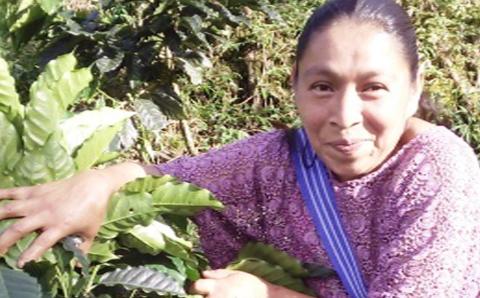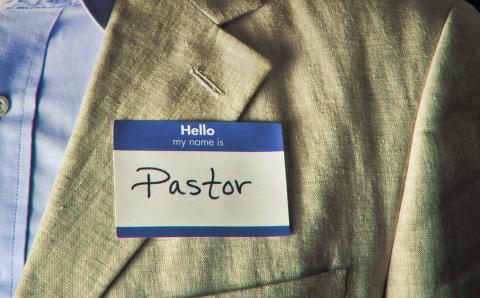“What is a pilgrim?”
The nun didn’t wait for a reply from the 90 people assembled for a blessing in Carrión de los Condes, Spain. She explained, “A pilgrim is someone who has a goal.” The nun followed up with another question and answer: “How do you reach your goal? Step by step.”
As I hiked El Camino de Santiago, “The Way of Saint James” or simply “The Camino,” in northern Spain with a group of students, the nun’s words stuck with me. What does it mean to be a pilgrim in the 21st century? And what can a thousand-year-old pilgrimage like the Camino offer us today?
Pilgrims first started to walk to Santiago de Compostela, Spain, in the 9th century when, according to tradition, the remains of the apostle James the Greater (brother of John) were discovered in a field. Pilgrimages on the Camino soon rivaled pilgrimages to Rome and Jerusalem.
A medieval pilgrim usually went to Santiago to receive forgiveness of sins—an indulgence—and so spend a shorter time in purgatory. These pilgrims started from home, wherever that may have been in Europe. Consequently, a web of trails developed across Europe, all converging on Santiago.
Today few pilgrims begin at home. Most take the Camino Francés, the “French Way,” which begins in France at Saint-Jean-Pied-de-Port, crosses over the Pyrenees, and continues across northern Spain for approximately 500 miles (800 km). Hiking on average 15 miles (24 km) each day, it takes about 33 days to complete the entire Camino Francés. The majority of pilgrims complete only a section of the Camino, usually the last 60 miles (100 km) needed to receive a compostela, a certificate of completion, in Santiago.
Few modern pilgrims hike the Camino to receive an indulgence. I discovered that those who hiked solely as tourists were often disappointed, as the trail became a blur of long days, sore feet, and crowded hostels. Most often, fellow pilgrims told me they had chosen to do the Camino for religious or spiritual reasons—out of thanks, in memory of a loved one, or to find direction in life.
In that light, a contemporary pilgrim needs to begin with an openness to the profoundly spiritual experience the Camino offers. Here are some reasons you may want to set off on a pilgrimage to Santiago.
Discover God’s grandeur. During our hike, I was often overwhelmed by the beauty of the Spanish countryside. Rolling fields of wheat, rows of poppies, sunrises above blue and black mountain peaks. The path also took us through ancient villages and to cathedrals with glorious stained glass windows. Admittedly, the Camino also goes through some gloomy industrial areas and along dreary highways. Even in such desolate places I saw signs of life and beauty: wildflowers growing through concrete or a solitary snail persevering on the path.
Learn to face discomfort. The Camino’s asphalt roads and gravel paths can be very hard on feet and joints. The intense Spanish sun sometimes alternates with drenching rain. The albergues—pilgrim hostels—usually offer bunk beds in large dormitories where snoring echoes throughout the night. You may hike 15 miles easily one day but not feel so ready the next day, or the next. A pharmacist we consulted about blister care dispensed bandages, salve, and wisdom: “Suffering is part of the Camino.” In that sense, being a pilgrim on the Camino means confronting your physical limitations while building the hope and trust needed to complete the journey. After weeks on the trail, that life lesson is not easily forgotten.
Enjoy community. The Camino is an international community of hikers where acts of great generosity and kindness are not uncommon. In one albergue, a hospitalero—a Camino volunteer—spent hours cleaning and bandaging students’ blisters for free. In another, our hosts prepared a massive paella and joined tables together so we could share the meal, family-style, with pilgrims from across the world. Friendships develop as you travel from village to village and meet the same people, share stories, and discuss politics, religion, and sports. You get a sense of what the world could be like, and what the next world will be like.
Embrace simplicity. I loved the simple rhythms of each day: getting up with sun, hiking until lunch, showering, washing my clothes by hand, taking a siesta, and then joining fellow pilgrims for a meal. My possessions were reduced to what I could carry in a small backpack. I had to depend on pilgrim hostels for lodging and food. The Camino allows you to to focus on what is essential in life, and then reflect on how you live at home.
Live like a pilgrim. Hikers will greet each other on the trail with Buen Camino, literally, “Good path.” I heard the greeting so often that it started to lose meaning. But when villagers began to wish me “Buen Camino,” I took the greeting to heart. With so much uncertain in life, being identified as a pilgrim was liberating. My job, education, salary, number of Facebook friends—all that didn’t matter. I was a pilgrim, someone with a clear goal.
Now that I’m back home, I realize I’m still a pilgrim—moving ahead day by day, step by step, in God’s care.
Practical Advice
How fit do you need to be? You should be able to walk at least 15 miles a day comfortably on varied terrain with a 20-pound (9 kg) backpack. That said, the Camino can be broken down into smaller segments. Many do the Camino in stages over several years or complete just the final 60 miles. My group only had time to do 300 of the total 500 miles. It is possible to have your luggage transported from town to town or to complete the Camino by bike or even on horseback. I recommend going on foot to experience the Camino fully.
How much does it cost? Once you have proper hiking gear and arrive in Europe, costs are quite low, especially if you stay in a hostel and can make some of your meals. Budget U.S. $25-35 a day for lodging, meals, and a midmorning café con leche.
Do I need to know Spanish? While you can get by with English and hand gestures, basic Spanish is very helpful, as many hosts speak only Spanish. A solid knowledge of Spanish will deepen your connection with your hosts and with the many Spanish-speaking pilgrims. A knowledge of almost any foreign language is an asset as you interact with pilgrims from across the world.
Websites
Pilgrim societies in North America offer useful websites to prepare for the Camino:
- American Pilgrims on the Camino: americanpilgrims.org
- The Canadian Company of Pilgrims: santiago.ca
Through these sites you may order a credencial, the pilgrim passport needed to stay in municipal and church-run hostels. Also available in Spain, the credencial is used to collect the sellos, stamps given by hostels and churches along the way to prove you have completed the Camino.
Films, Books, and an App
- “The Way,” Emilio Estevez’s moving film about a father hiking the Camino in memory of his son. Starring Estevez’s own father, Martin Sheen.
- “Walking the Camino. Six Ways to Santiago.” An informative documentary by Lydia B. Smith that profiles a very mixed group of pilgrims.
- Father Kevin A. Codd’s To the Field of Stars. A Pilgrim’s Journey to Santiago de Compostela provides an engaging and profound pilgrim’s memoir.
- John Brierley’s A Pilgrim’s Guide to the Camino de Santiago: St. Jean-Roncevalles-Santiago is the standard English-language guidebook.
- Smartphone users will love Camino Francés—A Wise Pilgrim Guide, an app that offers historical information, elevation maps, and the location of cafés, restaurants, albergues, and hotels.
About the Author
Otto Selles teaches French at Calvin College, Grand Rapids, Mich., and attends Neland Avenue Christian Reformed Church in Grand Rapids.









